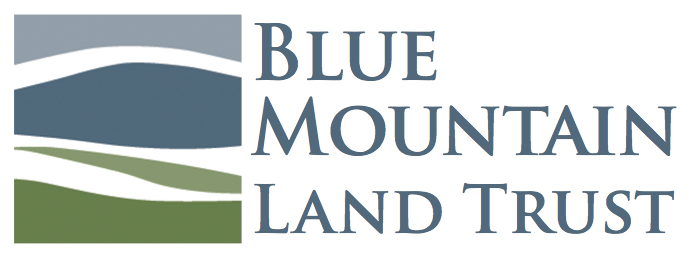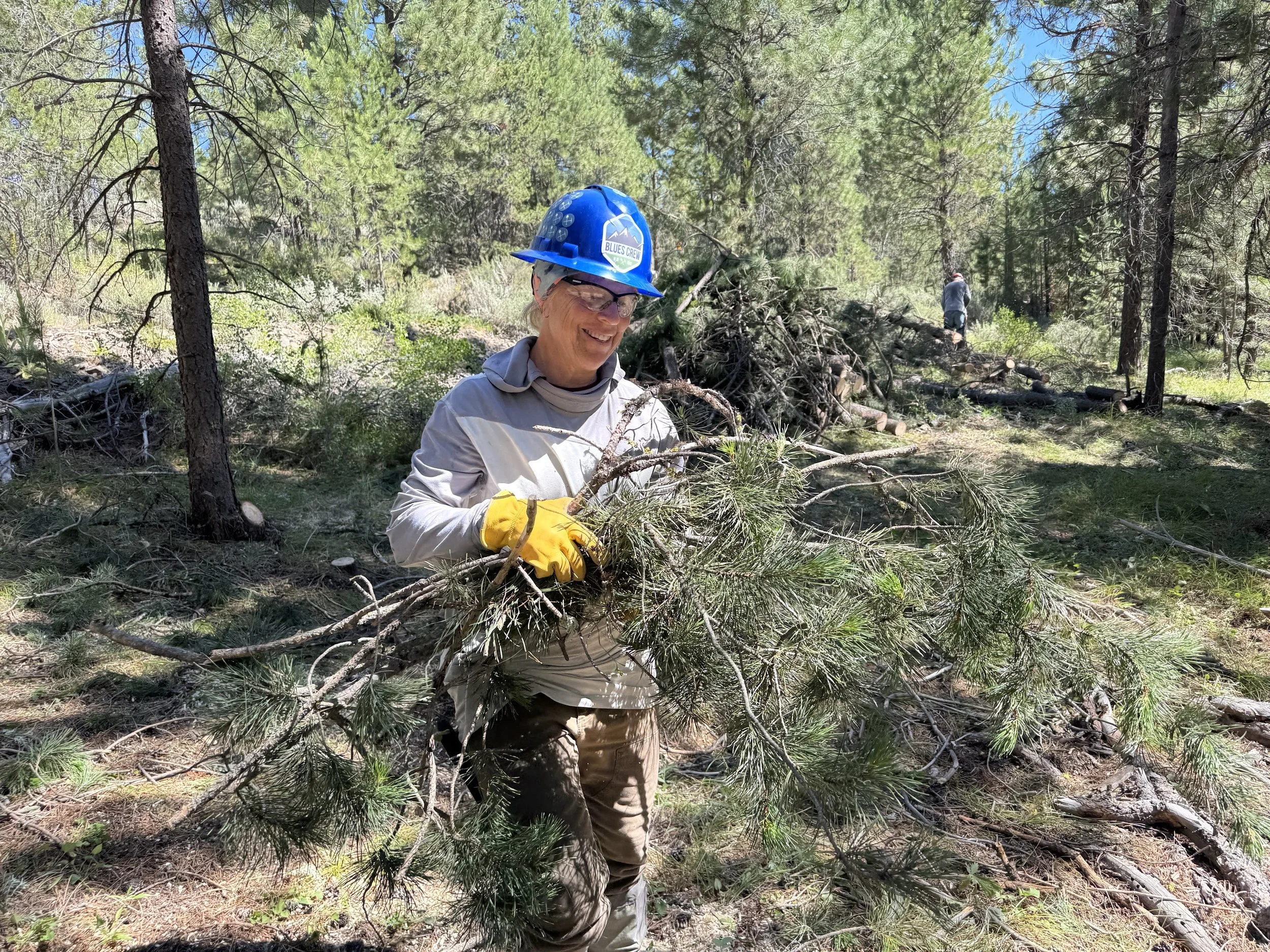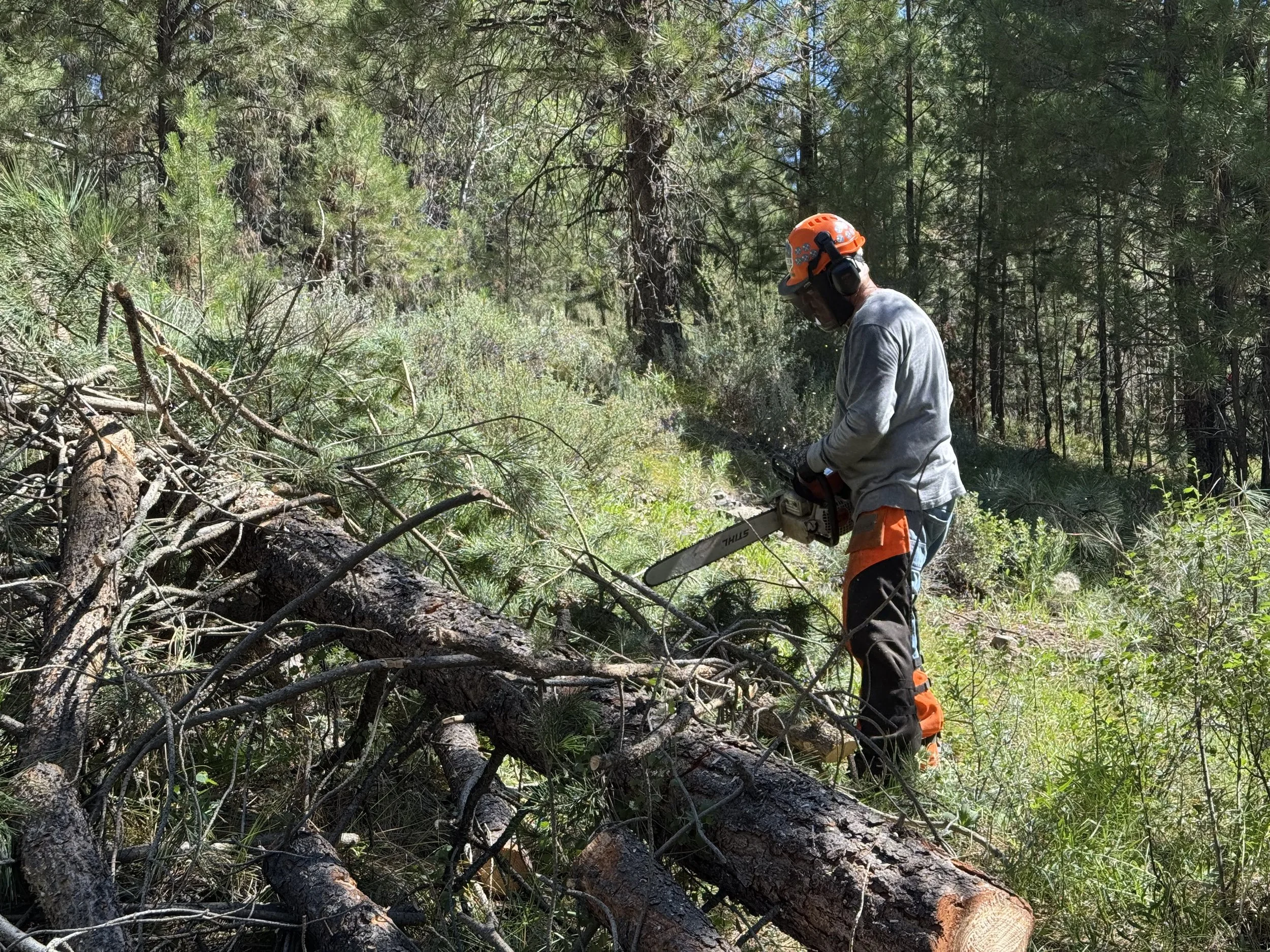Blues Crew Thinning Work Party Launches Upland Restoration at Phipps Meadow
Improving forest health, reducing wildfire risk, and creating more diverse native habitat for upland birds and wildlife through forest thinning.
Grant County, OR — In July 2025, Blue Mountain Land Trust (BMLT) launched the next phase of restoration at Phipps Meadow by hosting its first upland-focused volunteer work party. This work marks an essential step toward improving forest health, reducing wildfire risk, and creating more diverse native habitat for upland birds and wildlife.
Phipps Meadow is a 279-acre conservation property located 18 miles east of Prairie City. Acquired by BMLT in 2021, the property is now protected under a permanent conservation easement held by the Oregon Watershed Enhancement Board (OWEB). With a diverse mosaic of wet meadow, sagebrush steppe, mixed conifer forest, and 1.58 miles of the Middle Fork John Day River headwaters, Phipps Meadow supports habitat for hundreds of native plant and animal species—including spring-run Chinook salmon, bull trout, Mid-Columbia steelhead, and more than 70 documented bird species.
Over four days, BMLT’s Blues Crew volunteers supported by BMLT staff Craig Piefer (Trail Crew Leader) and Andrew Addessi (Stewardship and Restoration Director) removed ladder fuels and stunted lodgepole pine from ~4.5 acres of overcrowded forest and consolidating cut material into compact piles. This thinning work was also a great opportunity to test out the BMLT Blues Crew’s new suite of electric chainsaws, which are lighter and zippier than conventional gas saws, and a bit safer to operate during fire season.
This volunteer-led stewardship work at Phipps Meadow is part of a long-term, collaborative restoration strategy involving BMLT, the Confederated Tribes of Warm Springs, Malheur National Forest, and many other partners affiliated with the John Day Basin Partnership. A large-scale meadow and river restoration project is currently in final design, with implementation planned for 2026-2027. This work is essential to reconnect the river to the floodplain, reduce summer water temperatures, and improve aquatic and riparian habitat in this ecologically vital headwater system.
Meanwhile, the uplands require restoration to reestablish the open, fire-resilient ponderosa pine stands that historically dominated the landscape under natural low-intensity fire cycles. In recent decades, these stands have become overcrowded with a dense understory of stunted lodgepole pine, increasing the forest’s vulnerability to wildfire and climate impacts while reducing habitat quality for wildlife.
A unique opportunity exists to align upland and meadow restoration efforts at Phipps Meadow. Nearly all of the woody material generated through future mechanical thinning can be repurposed in meadow restoration features—such as riparian buck-and-pole fencing and other floodplain habitat structures.
While the most intensive restoration work will be completed through professional contracts in 2026–2027, volunteer stewardship remains essential. These adaptive, hands-on work parties advance focused stewardship projects suitable for all skill levels, and—just as importantly—foster strong, lasting connections between community members and the land. Future events may include forest pruning, soil rehab and native seeding, riparian planting, invasive species removal, fence building/repair, and ecological monitoring. Designed to be collaborative and welcoming to all skill levels and community members, these efforts help build a shared commitment to the long-term care of this ecologically significant property. BMLT plans to host 2–3 BMLT Blues Crew work parties each season.
This upland restoration work is supported by a 2025 Oregon Watershed Enhancement Board (OWEB) restoration grant with additional funding from the Bella Vista Foundation. BMLT is grateful to our volunteers, supporters, and partners for making these efforts possible.




